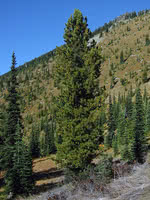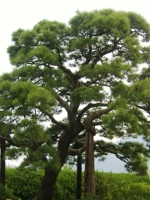Mon-Fri 9am - 5pm Mountain time
Whitebark Pine vs Japanese Black Pine
Pinus albicaulis
Pinus thunbergii
NOT AVAILABLE THIS SEASON - MIGHT RETURN
Endangered
Whitebark Pine is a beautiful coniferous tree that produces tasty, edible nuts. You'll love this trees' rustic and natural appeal, making it an excellent specimen tree.
It is an endangered species from the Rocky Mountains, this slow grower seldom produces cones until it is 50 years old but regularly survives to be 500 or more years of age. Our staff think it is among the most attractive pines we have grown.
Whitebark Pine is well-known for maintaining snow drifts, providing food and shelter to many species of wildlife, and bringing stability to steep slopes. This high elevation and adaptable tree is deer resistant and can withstand a variety of soils and moisture levels.
Japanese Black Pine is known for its unique and irregular growth habit, making it a striking landscape addition. It typically does not grow with a central leader. This causes it to form a flat-top, classic bonsai-like shape when mature. When it has a central leader, it will grow with a twisted trunk. Another striking feature is the white apical buds which contrast with the surrounding green needles.
The Japanese Black Pine is an excellent candidate for a bonsai tree and is frequently used by the bonsai community. It is found along the Japanese coast and is salt tolerant.

